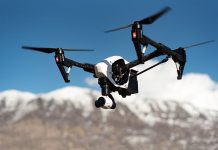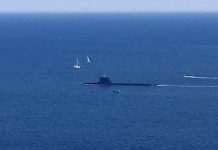
Northrop Grumman’s Manta Ray submersible underwater drone has garnered significant interest recently. Recent disclosures have provided clearer insights into its dimensions, despite satellite images being over a year old. The drone was observed at Port Hueneme Naval Base in California, where its imposing size has drawn comparisons to Star Wars’ interstellar ships.
The latest Google Earth images from November 2023 offer a detailed 3D view, showcasing the Manta Ray’s substantial 30-foot length and expansive 20-foot wingspan, crucial for stability and maneuverability underwater. Standing at approximately 5 feet tall, the Manta Ray integrates advanced sensors, communication gear, and autonomous capabilities, highlighting its role in military and research applications for prolonged underwater missions.
The Manta Ray is equipped with state-of-the-art technology, including high-resolution imaging systems, environmental monitoring tools, and customizable payload bays tailored for specific missions. Its primary role is to bolster military underwater operational capabilities, encompassing tasks such as intelligence gathering, mine countermeasures, and anti-submarine warfare. Beyond military applications, its versatility extends to non-military uses like oceanographic research and underwater infrastructure inspection.
Designed for extensive operational range, the Manta Ray can cover vast areas without frequent resurfacing, supported by energy-efficient systems and advanced battery technology that provide substantial endurance. Capable of prolonged underwater missions lasting weeks or months, its ability to operate autonomously in challenging environments sets it apart from many other submersible drones.
Northrop Grumman has been developing the Manta Ray underwater drone since 2020, under the Defense Advanced Research Projects Agency (DARPA). In 2023, initial tests evaluated its performance and autonomy in diverse underwater conditions. The strategic importance of these autonomous underwater vehicles suggests production plans will depend on the success of these tests and further evaluations. If early tests are favorable, production and deployment could begin in the latter half of this decade, allowing for enhancements based on operational feedback to meet the needs of the US Navy and other potential users.




